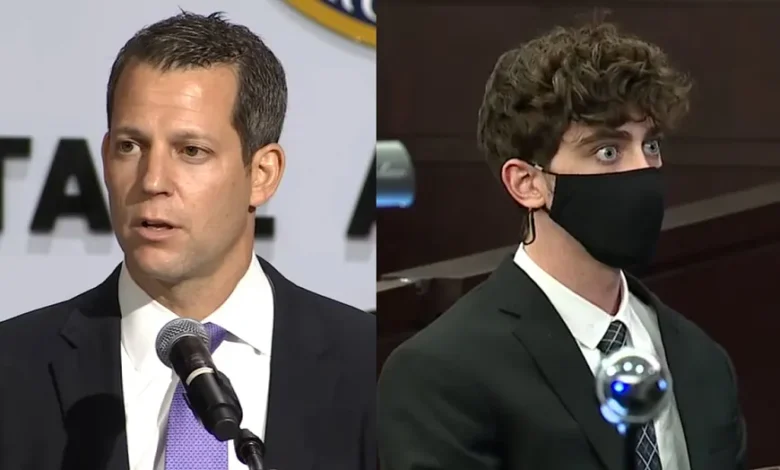Cameron Herrin Exploring the Impact of Social Media on Public Perception

Cameron Herrin became a household name overnight, but not for the reasons one might hope. A tragic event led to a viral video that circulated widely across social media platforms, sparking heated debates and polarized opinions. As people shared their takes on his case, it quickly turned into a spectacle of judgment and empathy. This phenomenon raises an important question: how does social media shape our perceptions of individuals like Cameron Herrin? The answer lies in understanding both the power and pitfalls of digital communication in today’s world. Let’s dive deeper into this complex issue and explore its implications for public perception and real-life consequences.
The role of social media in shaping public perception
Social media has revolutionized how we interact with information. It serves as a platform where opinions are formed, shared, and often amplified at lightning speed.
In this digital age, a single post can sway public sentiment dramatically. Users engage with content that resonates with their beliefs or emotions, creating echo chambers that reinforce existing views.
The immediacy of social platforms allows news—whether accurate or not—to spread like wildfire. Viral trends can rally support for causes but also lead to misinformation.
Furthermore, the constant flow of updates keeps users engaged but may cloud their judgment. With every scroll comes a new perspective, which complicates our ability to discern fact from opinion.
As individuals curate their feeds based on personal preferences, they inadvertently shape their understanding of reality through selective exposure. This phenomenon underscores the potent influence social media wields in molding collective perceptions.
How the viral video affected Cameron Herrin’s case and public opinion
The viral video featuring Cameron Herrin dramatically shifted the narrative surrounding his case. As footage spread across platforms, viewers were drawn into a story that ignited both empathy and outrage.
Those who watched felt connected to the incident in real-time. This emotional engagement often led to polarized opinions about Cameron’s actions and their consequences. Some portrayed him as a reckless driver; others saw him as a young man caught in a tragic accident.
Public sentiment evolved rapidly, with social media users voicing strong reactions through comments, shares, and hashtags. These digital conversations not only shaped perceptions but also influenced discussions around accountability and justice.
As more people chimed in on the topic, it became clear that public opinion was shifting like quicksand. What started as isolated views transformed into broader movements advocating for or against Cameron’s fate. The power of the viral video proved undeniable in molding an ever-changing landscape of thought around his case.
The power of online communities and hashtags in spreading information
Online communities and hashtags have transformed how information spreads. With just a few clicks, a single post can reach thousands of people in seconds. This rapid dissemination is powered by the collective sharing habits of users.
Hashtags play a crucial role in this process. They categorize content, making it easier for individuals to discover relevant discussions and viewpoints. A trending hashtag can ignite conversations that ripple across social media platforms.
These online groups often unite diverse voices around common causes or issues. When something resonates, communities rally together, amplifying messages that might otherwise go unnoticed.
However, while these networks create visibility, they also shape narratives quickly—often without context or verification. The impact on public opinion can be profound as emotions drive engagement more than facts do at times.
This dynamic illustrates both the power and responsibility inherent in using social media as a tool for information dissemination.
The downside of social media’s influence on public perception
Social media can distort reality. The speed at which information spreads often outpaces the truth. Misleading posts can go viral, swaying opinions without context or facts.
Misinformation thrives in online spaces. Users may share content that aligns with their beliefs, ignoring opposing views. This creates echo chambers where only one narrative prevails.
The emotional weight of social media adds another layer to its influence. Videos and images evoke strong feelings, leading people to react impulsively rather than thoughtfully assess a situation.
Public figures like Cameron Herrin become pawns in this game. Their stories are reduced to sound bites and hashtags, stripping away nuance and complexity.
This rush can lead to hasty judgments about individuals’ character and actions, overshadowing legal proceedings or personal narratives that deserve more scrutiny.
Real-life consequences for individuals like Cameron Herrin
Cameron Herrin’s case shines a light on the profound real-life consequences that can arise from viral social media moments. Once an ordinary young man, his life took a dramatic turn when he became embroiled in a tragic incident that garnered widespread attention online.
The public scrutiny intensified as opinions formed rapidly across platforms. Some viewed him with sympathy, while others branded him as villainous. This dichotomy illustrates how quickly perceptions can shift based on limited information.
As comments and hashtags spread like wildfire, Herrin faced not only legal repercussions but also relentless judgment from strangers. The emotional toll of being thrust into such an unforgiving spotlight is immense.
For many individuals caught in similar situations, the impact extends beyond immediate consequences; it often shapes their future opportunities and mental well-being. Navigating this complex terrain requires resilience amid overwhelming external pressures.
Conclusion: The need for responsible use of social media and critical thinking in forming opinions
The landscape of social media is constantly evolving. It has immense power to shape narratives and influence public opinion in real-time. The case of Cameron Herrin highlights this phenomenon vividly. With one viral video, a complex legal situation turned into a spectacle for millions online.
As we navigate through these digital waters, the need for responsible use of social media becomes paramount. Users must remember that likes, shares, and retweets can have lasting repercussions on individuals’ lives. Critical thinking should guide our engagement with content rather than blind acceptance or emotional reactions.
When encountering stories like Cameron Herrin’s, it’s essential to dig deeper than surface impressions. Understanding the full context allows us to form balanced opinions based on facts instead of fleeting emotions stirred by sensationalist posts.
Cultivating an environment where thoughtful dialogue replaces hasty judgments can lead to more informed communities. As technology continues to advance, so does our responsibility as users within this vast virtual space. Embracing critical thinking ensures that we contribute positively and ethically while navigating the complexities of modern communication platforms.




